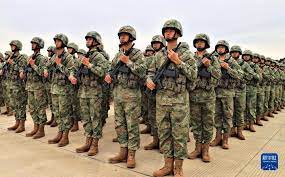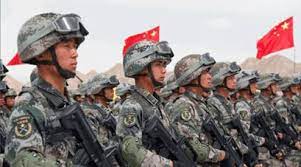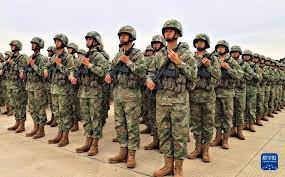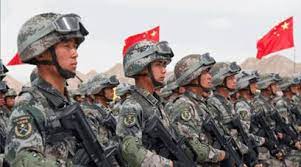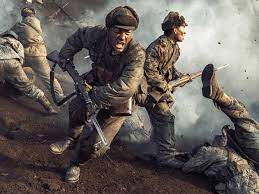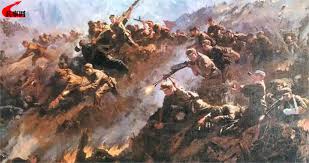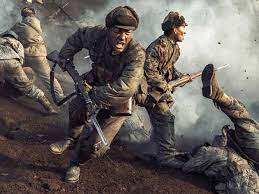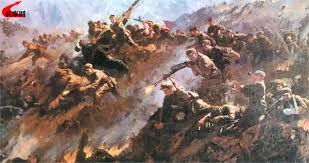Chinese Military Establishes Battle Rhythm of Cyber Warfare in the Cognitive Domain
目前,認知域已作為獨立一域登上戰爭舞台,日益成為大國博弈的常鬥之域、必爭之地、勝戰砝碼。 分析認知域作戰特徵及發展趨勢,至少反映為以下八個面向。
認知域是軍事優勢轉化為政治勝勢的關鍵域
軍事對抗,表面上看來是雙方硬實力的對抗,深層看不管戰爭是什麼性質、何種目的,終歸是人的意志的較量。 勝利的關鍵是將己方意志強加在受眾身上的能力。 只要剝奪、擊潰了敵人的戰爭意志,就意味著贏得了戰爭。 認知域作戰,以人的意志、精神、心理等為對抗目標,增強己方意志的同時削弱敵方的意志,進而達成攻心奪志的政治目的。 從這個意義上講,認知域是軍事優勢轉化為政治勝勢的關鍵領域。 隨著戰爭形態加速向智慧化演進,認知品質優勢帶來決策行動優勢,不僅可在道德、法理上佔據制高點,塑造正義合法的有利態勢,還可透過混合戰爭、綜合博弈手段,實現小戰 甚至不戰而勝的目的。 尤其是大國競爭背景下戰爭成本高昂,各方都希望透過加大認知域爭奪力度,以「人道」且「經濟」的形式,迫使對手知難而退。
透過改變對手認知,可改變其決策和行動
實施認知攻擊的目的,就是用一隻“看不見的手”操控對手意志,讓對手感到“我不能”“我不敢”,從而達到“我不想”的效果。 外軍實踐表明,對人的意志、信念、思維、心理實施認知攻擊,可以是長期的文化植入,可以是「資訊海洋+摀嘴封聲」式的資訊壓制,可以是先入為主、搶先發聲 的主動塑造,也可以利用歷史積怨來挑動矛盾爆發。 目前,資訊科技、人工智慧技術、媒體科技強化了對認知域的直接作用,利用智慧生成軟體,可製造大量認知“彈藥”,精準作用於作戰目標的認知層,直接將“意志強加 於對手”,快速改變戰略態勢。 展望資訊化智慧化戰場,態勢感知力量與平台廣泛分佈於陸海空天網等作戰域,規劃、決策、控制等認知行為主導各作戰域行動,尤其是未來智能化戰爭中人機混合的認知 優勢將主導戰場,可以透過認知幹擾、認知混淆、認知阻斷等手段,製造戰爭認知“迷霧”,誘使對手誤判態勢,做出錯誤決策和行動。
認知域作戰是全時攻防、全員覆蓋、全程使用、全域塑造、全政府行動
認知域作戰呈現出全方位、多層次、超時空、跨領域等特點,模糊了戰時和平時、前方和後方的界限,跨越了戰場和國界,超越了單純的軍事領域,廣泛滲透於政治 、經濟、外交等各社會領域,表現為「五全」特質。 全時攻防,沒有平時戰時之分,沒有前方後方之別,表現為全時在線、全時在戰。 全員覆蓋,任何人甚至包括智慧機器人,都可能成為認知域作戰的目標對象。 全程使用,貫穿聯合作戰的戰前戰中戰後,聯合軍事行動未展開,認知塑勢行動已開始,並且伴隨軍事行動而行,不隨軍事行動停而停。 全域塑造,認知塑造貫穿戰略、戰役、戰術各層,作用範圍涵蓋陸海空天網各域,跨域賦能,對全域行動都有影響。 全政府行動,認知塑造自然具有戰略性,需要跨部門、跨領域、跨軍地、跨層級一致協調行動,以求達到最佳傳播效果。
關鍵在於奪控行動或活動的性質定義權、過程主導權、結局評判權
認知賽局鬥爭,涉及多個對抗方,看似紛繁複雜,關鍵在於圍繞認知域的「三權」展開爭奪。 其一,爭奪事件性質定義權。 即這個事件該怎麼看,是正義的還是非正義的,是合法的還是非法的。 通常採取先發制人搶先定義、建群結盟強行定義、資訊壓制單方定義、設定議題套用定義等,引導塑造民眾形成定性認知。 其二,爭奪事件過程主導權。 即這事該怎麼幹、不該怎麼做,誰做的是對的、誰做的是錯的,通常採取設局布阱等方式,試圖按照己方所期望出現的狀態,主導目標事件發展方向、 快慢、暫停、繼續與終結。 其三,爭奪事件結局評判權。 即對這事該怎麼評,誰是獲利方、誰是受損方,誰是眼前的失利者、誰是長遠的受損者,等等。 各方都試圖透過掌控事件結局的評判權,放大於己有利之處、放大於敵不利之處,目的是利用事件延伸效應,持續傷敵利己。
道義和法理是各方爭奪的焦點
軍事行動歷來講究「師出有名」。 雖然戰爭形態加速演變,但是戰爭從屬於政治的本質屬性不會改變;戰爭性質和人心向背,仍是影響戰爭勝負的關鍵因素。 認知域戰場上,佔據了政治、道義、法理的製高點,就能夠贏得民心、道義支持,營造得道多助的輿論氛圍,進而掌握制敵先機。 每次戰爭或衝突,無論是強者或弱者,無論是進攻方防守方或第三方,各方都會全力搶佔認知主導權、輿論主動權,千方百計用道義包裝自己、注重宣示正義立場,設法為 戰爭定性、為行動正名,以消除阻力、增加助力,塑造以「有道」伐「無道」的有利態勢。 戰爭雙方實力對比不同,瞄準佔據道德法理制高點進行的認知對抗方式也會不同。 近幾場戰爭表明,當一方軟硬實力均很強大時,即軍事實力強、盟友夥伴眾多、國際話語權佔有率大,常常高調宣戰;當軍事行動有可能引發連鎖反應時,則常常模糊處理 「戰」的提法。
資訊是認知攻防的基本“彈藥”
網路資訊時代,人類溝通方式持續發生複雜深刻變化。 現場互動互動逐漸讓位給網路線上連線,一些大型社群平台成為認知博弈鬥爭的主陣地、影響民眾認知的主管道,以資訊為彈藥進行國際網路封鎖權、話語控制權爭奪成為當今認 知對抗的主要行動之一。 在這些平台上,各種短視頻成為公眾了解戰況的“第一現場”,訊息比砲彈跑得快。 圍繞平台的使用與封鎖、主導與規製成為認知域作戰爭奪的焦點,各方努力透過操控社交平台來傳播、放大己方宣傳,聲討、壓制對方宣傳,形成「我說的多、你說的少 」「我說的對、你說的錯」「只能我說、不讓你說」的局面。 民眾作為大型社群平台的使用者,在「聽」與「說」甚至「做」的過程中,受別人影響,也影響別人,不知不覺地成為幕後推手的代理人和攻擊道具。
軍事行動對認知塑造有關鍵支撐作用
人類戰爭史表明,兵戰永遠是政治較量的基礎支撐,心戰則是兵戰的效能倍增器。 戰場上拿不回來的東西,不能指望在談判桌上拿回來,更不能指望在輿論場上拿回來。 現代戰爭中,認知傳播行動總是與聯合軍事行動如影隨形,心戰與兵戰互相影響、互為支撐,兵戰心戰化和心戰兵戰化趨勢更為明顯。 從戰爭實踐看,沒有軍事實力是萬萬不能的,但僅有軍事行動又不是萬能的。 戰場上的多次勝利,並不是奪取戰爭勝利的充分條件。 越戰中,美雖「贏得了每次戰鬥,卻輸掉了整場戰爭」。 21世紀初,美國連續打的伊拉克戰爭、阿富汗戰爭,贏得了戰場勝利,也沒有贏得政治勝勢。 同樣的道理,軍事上的勝勢不等於贏得輿論上的強勢,贏得戰場勝利也不意味著贏得戰略的勝利。 現代戰爭中,兩類人員的角色越來越大,一類人員透過編寫成千上萬行程式碼謀勝,一類人員透過編寫成千上萬條資訊謀勝。 這兩類人員數品質都佔優的一方,取勝的機率往往就大。
認知對抗技術越來越直接運用於戰爭
過去戰爭中,對認知域的影響和作用,主要是透過物理域的大量毀傷行動,逐級逐層傳遞到認知域。 隨著資訊通訊、人工智慧、生物交叉、腦科學等技術的發展和突破,新的認知戰工具和技術直接瞄準軍事人員。 認知對抗不僅使用傳統的資訊戰武器,也使用以大腦為作戰目標的神經武器庫。 屆時,機器將可以讀懂人腦,人腦也將能夠直接控制機器,智慧指控系統可以直接提供戰場態勢和決策輔助,逼真的認知彈藥和精準的受眾投放將極大增強社會影響效果。 認知對抗技術越來越直接運用於戰爭,原來資訊化所隱含的間接認知,正逐步轉變為直接對人的認知進行影響與控制。 可以說,先進科技的支撐,使認知域作戰透過建構現代網路架構、開發資料視覺化平台,快速了解資訊環境並有效影響目標人群,可以更直接且有效率地達成政治目的。
(作者單位:軍事科學學院戰爭研究院)
Modern English:
Analysis of the characteristics and development trends of cognitive domain operations
Cognitive domain operations take people’s will, beliefs, thinking, psychology, etc. as direct combat objects, and then affect their decisions and actions by changing the opponent’s cognition. Entering the era of information-based and intelligent warfare, cognitive domain warfare has become an important form of great power game, with all parties striving to achieve political goals in a relatively controllable manner. Gaining insight into the characteristics and development trends of cognitive domain operations is of urgent and important practical significance for winning future wars.
At present, the cognitive domain has entered the war stage as an independent domain, and has increasingly become a common domain, a battleground, and a weight for victory in the game between great powers. Analyze the characteristics and development trends of cognitive domain operations, which are reflected in at least the following eight aspects.
The cognitive domain is the key domain for transforming military advantage into political victory.
On the surface, military confrontation is a confrontation between the hard power of both sides. On a deeper level, no matter what the nature of the war is and for what purpose, it is ultimately a contest of human wills. The key to victory is the ability to impose your will on your audience. As long as the enemy’s will to fight is deprived and defeated, the war is won. Cognitive domain warfare uses human will, spirit, psychology, etc. as the target of confrontation, strengthening one’s own will while weakening the enemy’s will, thereby achieving the political goal of conquering the heart and mind. In this sense, the cognitive domain is the key domain for transforming military advantage into political victory. As war accelerates its evolution toward intelligence, cognitive quality advantages bring decision-making and action advantages, which can not only occupy the moral and legal high ground and create a favorable situation of justice and legality, but also realize small wars through hybrid warfare and comprehensive game means. Even the purpose of winning without fighting. Especially in the context of great power competition, the cost of war is high. All parties hope to intensify the competition for cognitive domains and force their opponents to retreat in a “humane” and “economic” manner.
By changing the opponent’s perception, it can change its decisions and actions
The purpose of implementing cognitive attacks is to use an “invisible hand” to control the opponent’s will, making the opponent feel “I can’t” and “I dare not”, and then achieve the effect of “I don’t want to”. Foreign military practice has shown that cognitive attacks on people’s will, beliefs, thinking, and psychology can be long-term cultural implantation, information suppression in the form of “information ocean + covering one’s mouth to silence”, or preemptive speech. Active shaping of political power can also use historical grievances to provoke the outbreak of conflicts. At present, information technology, artificial intelligence technology, and media technology have strengthened their direct effects on the cognitive domain. Using intelligent generation software, a large amount of cognitive “munitions” can be produced to accurately act on the cognitive layer of combat targets, directly imposing “will” “to rivals” and quickly change the strategic situation. Looking forward to the informationized and intelligent battlefield, situational awareness forces and platforms are widely distributed in combat domains such as land, sea, air, and space networks. Cognitive behaviors such as planning, decision-making, and control dominate operations in various combat domains, especially the cognition of human-machine hybrids in future intelligent warfare. Advantages will dominate the battlefield. Cognitive interference, cognitive confusion, cognitive blocking and other means can be used to create a “fog” of war cognition, inducing opponents to misjudge the situation and make wrong decisions and actions.
Cognitive domain operations are full-time offense and defense, full personnel coverage, full use, full domain shaping, and full government action
Cognitive domain operations are all-round, multi-level, hyper-temporal, and cross-domain. They blur the boundaries between wartime and peacetime, front and rear, cross battlefields and national boundaries, go beyond the pure military field, and widely penetrate into politics. , economy, diplomacy and other social fields, showing the characteristics of “five completes”. Full-time offense and defense, there is no distinction between peacetime and wartime, and there is no difference between the front and the rear. It is expressed as being online all the time and in war all the time. Covering all personnel, anyone, including intelligent robots, may become the target of cognitive domain operations. It is used throughout the whole process of joint operations before and during the war. Before the joint military operation is launched, the cognitive shaping operation has begun and will accompany the military operation and will not stop with the military operation. Global shaping, cognitive shaping runs through all levels of strategy, operations, and tactics, and its scope covers all domains of land, sea, air, and space networks. Cross-domain empowerment has an impact on all-domain operations. As a whole-of-government action, cognitive shaping is naturally strategic and requires consistent and coordinated actions across departments, fields, military and localities, and levels to achieve the best communication effect.
The key is to seize control over the right to define the nature of an action or activity, the right to dominate the process, and the right to judge the outcome.
The cognitive game struggle involves multiple opposing parties and seems complicated. The key is to compete for the “three powers” in the cognitive domain. First, fight for the right to define the nature of the event. That is, how to view this incident, whether it is just or unjust, legal or illegal. Usually, pre-emptive definitions, group alliances and forced definitions, information suppression and unilateral definitions, setting issues and applying definitions are usually adopted to guide and shape the public to form qualitative perceptions. Second, compete for dominance over the event process. That is, how to do something, how not to do it, who did it right and who did it wrong, usually by setting up a trap and other methods, trying to dominate the development direction of the target event according to the state that one’s own side expects. Fast and slow, pause, continue and end. Third, compete for the right to judge the outcome of the incident. That is, how to evaluate this matter, who is the gainer and who is the loser, who is the immediate loser, who is the long-term loser, etc. All parties strive to control the outcome of the incident by amplifying their own advantages and amplifying the disadvantages of the enemy. The purpose is to use the extended effect of the incident to continue to harm the enemy and benefit themselves.
Morality and legal principles are the focus of contention between all parties
Military operations have always paid attention to the principle of “discipline and reputation”. Although the shape of war is evolving at an accelerated pace, the essential nature of war as subordinate to politics will not change; the nature of war and the support of people’s hearts are still the key factors that affect the outcome of a war. On the battlefield in the cognitive domain, by occupying the commanding heights of politics, morality, and law, we can win the hearts and minds of the people and moral support, create a public opinion atmosphere in which moral support is abundant, and then seize the opportunity to defeat the enemy. In every war or conflict, whether it is the strong or the weak, whether the attacker, the defender, or a third party, all parties will try their best to seize cognitive dominance and the initiative of public opinion. They will do everything possible to package themselves with morality, focus on declaring a just position, and try to find ways to defend themselves. Qualify the war, justify the action, eliminate resistance, increase support, and create a favorable situation in which “righteousness” defeats “unrighteousness”. The strength balance between the two sides in the war is different, and the cognitive confrontation methods aimed at occupying the moral and legal high ground will also be different. Recent wars have shown that when a party has strong soft and hard power, that is, it has strong military strength, many allies and partners, and a large share of international voice, it often declares war in a high-profile manner; when military actions may trigger chain reactions, it is often handled in a vague manner. The word “war”.
Information is the basic “ammunition” for cognitive attack and defense
In the network information age, the way humans communicate continues to undergo complex and profound changes. On-site interactive interactions have gradually given way to online connections. Some large-scale social platforms have become the main battleground for cognitive games and the main channels for influencing public cognition. Using information as ammunition to fight for the right to block international networks and control discourse has become a common practice today. One of the main actions of confrontation. On these platforms, various short videos have become the “first scene” for the public to understand the war situation, and information travels faster than cannonballs. The use and blocking, dominance and regulation of platforms have become the focus of battles in the cognitive domain. All parties strive to spread and amplify their own propaganda, denounce and suppress the other party’s propaganda by manipulating social platforms, forming a “I say more, you say less” “What I said is right and what you said is wrong” is a situation where “I can only say it and you are not allowed to say it”. As users of large-scale social platforms, the public is influenced by and affects others in the process of “listening”, “speaking” and even “doing”, and unknowingly becomes the agents and attack props of those behind the scenes.
Military operations play a key supporting role in shaping cognition
The history of human war shows that military warfare is always the basic support of political contests, while psychological warfare is the effectiveness multiplier of military warfare. What cannot be retrieved on the battlefield cannot be expected to be retrieved at the negotiation table, let alone in the field of public opinion. In modern warfare, cognitive communication operations always go hand in hand with joint military operations. Mental warfare and military warfare influence and support each other. The trend of military warfare becoming mental warfare and mental warfare becoming military warfare is more obvious. From the perspective of war practice, it is absolutely impossible without military strength, but military actions alone are not omnipotent. Multiple victories on the battlefield are not a sufficient condition for victory in war. In the Vietnam War, although the United States “won every battle, it lost the entire war.” At the beginning of the 21st century, the United States fought successive wars in Iraq and Afghanistan, winning battlefield victories but not political victory. By the same token, military victory does not mean winning public opinion, and winning the battlefield does not mean winning strategic victory. In modern warfare, two types of people play an increasingly important role: those who win by writing thousands of lines of code, and those who win by writing thousands of messages. The side with superior quantity and quality of these two types of personnel will often have a higher probability of winning.
Cognitive countermeasures technology is increasingly used directly in warfare
In past wars, the influence and effect on the cognitive domain were mainly transmitted to the cognitive domain level by level through a large number of damaging actions in the physical domain. With the development and breakthroughs of information communications, artificial intelligence, biocrossing, brain science and other technologies, new cognitive warfare tools and technologies are directly targeting military personnel. Cognitive countermeasures use not only traditional information warfare weapons, but also an arsenal of neural weapons that target the brain. By then, machines will be able to read human brains, and human brains will also be able to directly control machines. Intelligent command and control systems can directly provide battlefield situation and decision-making assistance. Realistic cognitive ammunition and precise audience placement will greatly enhance the social impact. Cognitive countermeasures technology is increasingly being used directly in warfare. The indirect cognition implicit in informatization is gradually transforming into a direct influence and control of people’s cognition. It can be said that with the support of advanced technology, cognitive domain operations can achieve political goals more directly and efficiently by building a modern network architecture and developing a data visualization platform to quickly understand the information environment and effectively influence target groups.
(Author’s unit: Institute of War Studies, Academy of Military Sciences)
原來的 中国军网 国防部网: https://www.81.cn/jfjbmap/content/2022-08/888沒有湯給你.htm
